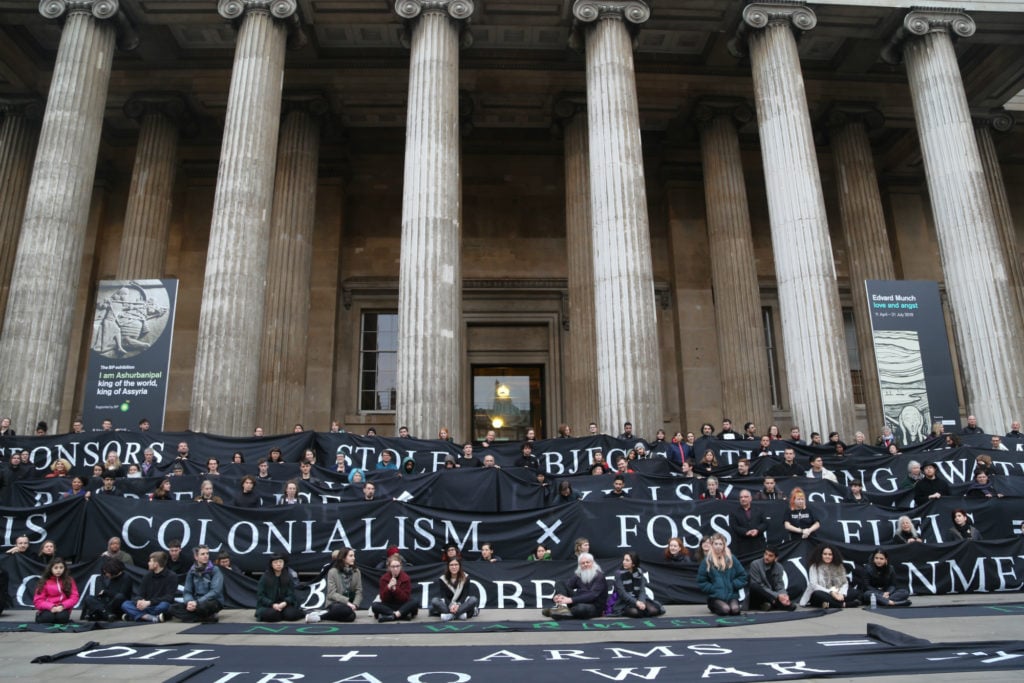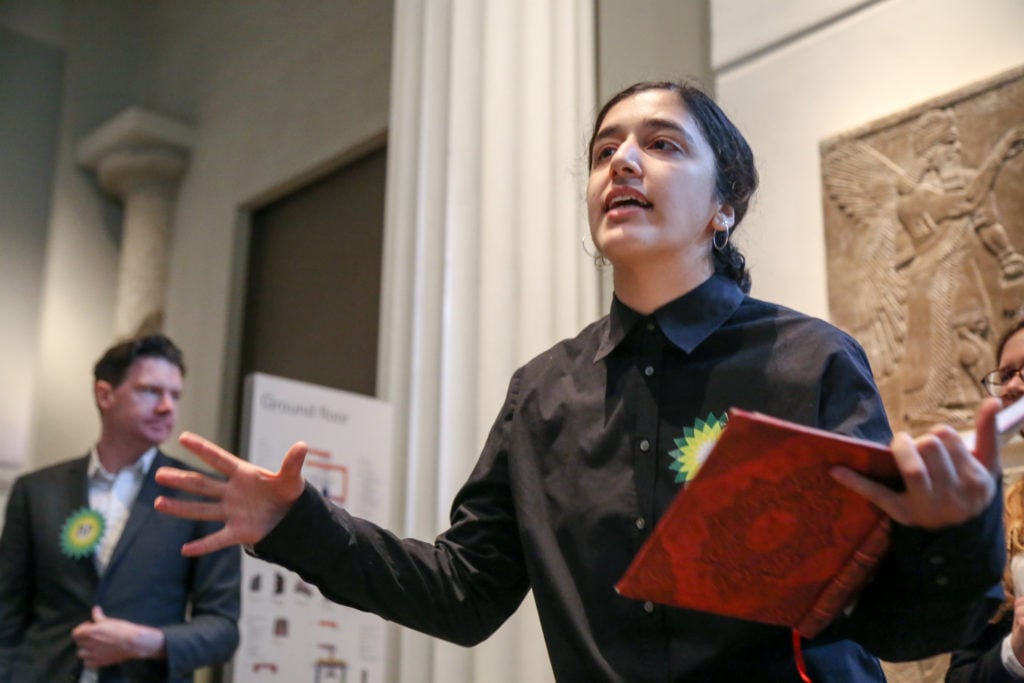Politics
Hundreds of Protesters Demonstrated at the British Museum Against Its Relationship With Oil Giant BP
BP maintains sponsorships at the museum and other British institutions.

BP maintains sponsorships at the museum and other British institutions.

Javier Pes

The British Museum is standing by its controversial partnership with energy giant BP despite an enormous climate change protest that unfolded at the museum over the weekend.
Around 350 activists associated with the group BP or Not To BP? gathered inside the museum on Saturday to unfurl a flood of banners, including a 650-foot streamer, to denounce the energy company’s alleged exploitation of Iraq’s oil fields following the Iraq War. The action took place on the 16th anniversary of mass demonstrations in London against the war.
On Saturday, the group formed a human circle around the museum’s historic Round Reading Room in the Great Court, spreading a banner that quoted a Foreign Office official who wrote in an email before the 2003 invasion of the country that “Iraq is the big oil prospect. BP are desperate to get in there.”
The company is now sponsoring the exhibition “I am Ashurbanipal: king of the world, king of Assyria,” which focuses on the art of the ancient Middle East.
“It is offensive on multiple levels to see a company complicit in the invasion sponsoring an exhibition of Iraqi heritage,” a spokesperson for BP or Not To BP? tells artnet News.
The protest puts increased pressure on museum directors and trustees to reject funding that critics describe as tainted. This week, the artist and anti-opioid activist Nan Goldin announced that she would withdraw from an offer she says she received to have a retrospective exhibition at London’s National Portrait Gallery if the museum accepts a £1 million donation from the Sackler Foundation.

Climate change activists protest BP’s sponsorship of the British Museum’s Assyrian exhibition. Photo by Diana More, courtesy of Climate change activists protest at the British Museum. Photo by Diana More, courtesy of BP or not BP?
In a statement, the British Museum said it allows peaceful protest as long as there is no risk to the museum’s collection, staff, or visitors.
The museum also defended itself against claims by protesters that many of the works from its collection that are exhibited in “I am Ashurbanipal” were looted in the 19th century. A museum spokesperson stressed that they were excavated with “the full knowledge and permission of the Ottoman government, who gave permission for the objects to be exported.”
Climate change campaigners have found success in the past. In October, the National Gallery parted ways with Shell, and Tate ended its relationship with BP in 2016.
But BP is still embedded in the British art world. The company continues to sponsor the National Portrait Gallery’s prestigious and popular annual exhibition, the “BP Portrait Award,” and its relationship with the British Museum was renewed in 2016, and doesn’t expire until 2022.
“An institution that will keep promoting BP into [2022] looks increasingly out of step with society,” a spokesperson for the activists said.
To broaden the reach of its efforts, BP or Not To BP? has organized a show of works by artists from Iraq and of Iraqi heritage at P21 Gallery, which is a short walk from the British Museum. The protest show, titled “I Am British Petroleum: King of Exploitation. King of Injustice,” runs through March 2.